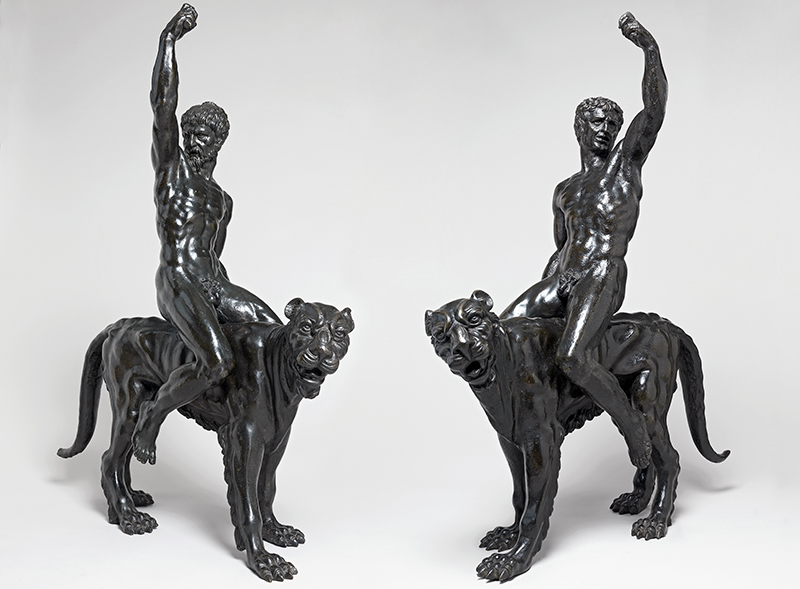The two metre-high pieces, showing muscular men riding on ferocious panthers, had been long admired for their anatomy and beauty but had been attributed to other artists over the last 120 years.
All that changed last autumn when Prof Paul Joannides, emeritus professor of art history at the University of Cambridge, spotted a tiny detail in a drawing by one of Michelangelo’s apprentices in the Musée Fabre, Montpellier, France. It showed, in one corner, a composition of a muscular youth riding a panther, drawn in the abrupt, forceful manner that Michelangelo employed in his sculpture designs.
This revelation triggered further art-historical research with input from a number of international experts. The bronzes were compared with other works by Michelangelo and found to be similar in style and anatomy to his works of 1500-1510; a date confirmed by the preliminary conclusions of initial scientific analysis.
The investigation is still underway, the findings of which will be presented at an international conference on 6 July, 2015. Though it is thought that Michelangelo sculpted almost exclusively in marble and never in bronze, he is documented as having made a two-thirds life-size David for a French grandee: sadly it disappeared during the French Revolution.
Dr Victoria Avery, keeper of the applied arts department of the Fitzwilliam Museum, comments: “It has been fantastically exciting to have been able to participate in this ground-breaking project, which has involved input from many art-historians in the UK, Europe and the States, and to draw on evidence from conservation scientists and anatomists. The bronzes are exceptionally powerful and compelling works of art that deserve close-up study – we hope the public will come and examine them for themselves, and engage with this ongoing debate.”
The bronzes and a selection of the evidence go on display on 3 February in the Italian galleries at the Fitzwilliam Museum, which celebrates its bicentenary in 2016. They are available to view until August. Admission is free.

